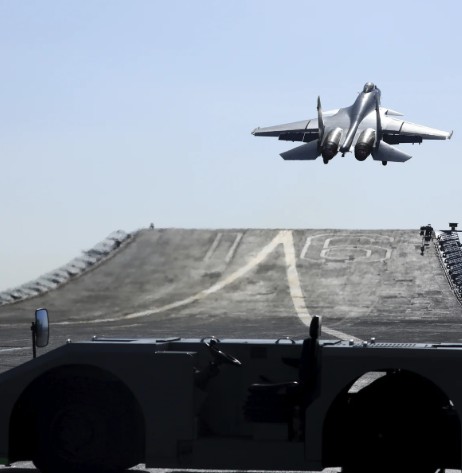Tensions rise in East Asia as Chinese jets fly within 45 meters of Japanese aircraft during unprecedented naval drills involving two Chinese aircraft carriers. Japan has lodged a formal diplomatic protest with China after Chinese fighter jets flew unusually close to Japanese military patrol planes over the weekend, in what Tokyo is calling a dangerously provocative act. The incidents occurred between June 7 and 8, and involved Chinese aircraft flying as close as 45 meters (148 feet) to Japanese Air Self-Defense Force planes during routine surveillance missions. These flights coincided with a historic dual deployment of Chinese aircraft carriers operating simultaneously in the Pacific Ocean marking a first in China’s naval history. “We have expressed serious concern to the Chinese side and solemnly requested prevention of recurrence,” said Chief Cabinet Secretary Yoshimasa Hayashi at a Thursday news conference. “Such actions pose a serious risk of accidental collisions and escalate already fragile regional tensions.” The proximity of the Chinese fighter jets falls below the minimum safe distance recognized in international military aviation guidelines, Japanese officials said.
Dual Carrier Presence Raises Alarms
The aerial encounters occurred while China’s Shandong and Fujian aircraft carriers were spotted conducting parallel operations in the western Pacific. The maneuver signals a significant escalation in China’s blue-water naval capabilities and strategic posturing in the region. Japan’s Defense Ministry expressed concern that the dual carrier exercise may be part of Beijing’s broader effort to project military power across the First and Second Island Chains, and possibly pressure Taiwan or counter U.S.-Japan security cooperation. “This is not a routine deployment,” said a senior Japanese defense analyst. “This is power signaling, and the close fly-bys are a message intended or not.”
Regional Repercussions and Diplomatic Fallout
Japan has now joined the United States and the Philippines in raising concerns over China’s increasingly assertive military behavior. The incident also comes at a time of growing Chinese military presence around Taiwan, the East China Sea, and the South China Sea. The Japanese government confirmed it is in ongoing communication with Washington and other regional allies, and has stepped up maritime and air surveillance. Meanwhile, Chinese state media outlets have not acknowledged the aerial incidents but hailed the dual-carrier deployment as a milestone in the People’s Liberation Army Navy’s (PLAN) modernization. With G7 and Indo-Pacific defense talks approaching later this month, observers expect Tokyo to push for clearer multilateral deterrence strategies against military coercion in the region.



